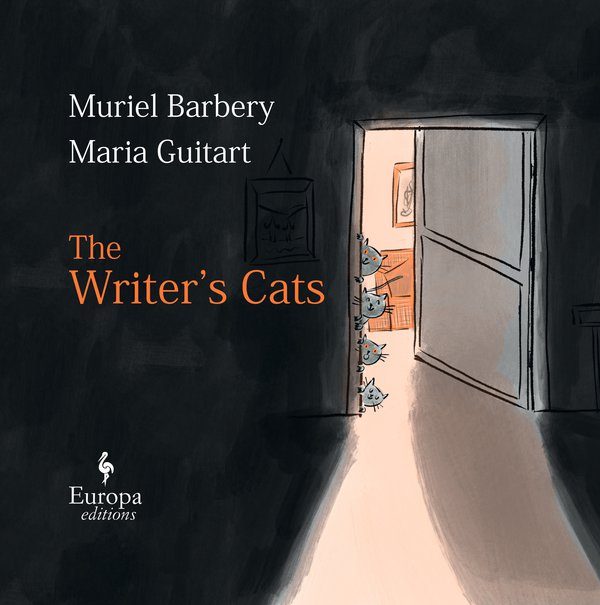
In today’s post, the cats have their day, Muriel Barbery’s cats.
Muriel Barbery, the author of The Elegance of The Hedgehog, and her peerless literary advisors, her cats, co-created a book, The Writer’s Cats, translated by Alison Anderson, illustrated by Maria Guitart and published by Europa editions. To say it was not what I expected would be an understatement.
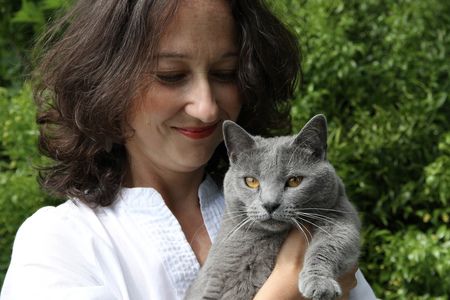
What I expected was Muriel Barbery waxing on about the calming effects her cats provide her writing life; instead with the first slide of my e-book’s page I was let in on the inside scoop of Ms. Barbery’s writing foibles, as only her pets would know.
Muriel’s four Chartreux cats, a breed with blue-gray fur and copper eyes, are Kirin and Petrus, four-year-old brothers, and Ocha and Mizu, an eight-year-old brother and sister, each, except for Petrus, with distinctive neuroses.
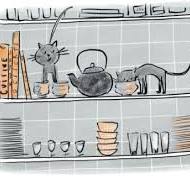
Ocha, which means tea in Japanese, is the boss. He’s bigger and softer than the others and would rather spend the day snoozing by the fire but will kill for a mere crumb of paté.
Mizu, whose name means water in Japanese, has front legs that are shorter and slightly twisted and walks like a ferret. Mizu engages in endless discussions with her writer owner while curling closely against Ms. Barbery’s right hip. Territorial, Mizu is not be messed with concerning spaces she feels are hers.
Petrus is named after a wine the writer likes to drink and one of the characters in her book, The Life of Elves, which I’ve just now added to my TBR list. Petrus is always happy and, above all else, likes flowers.
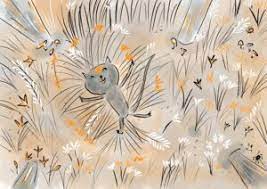
Last but not least is Kirin, the story’s narrator, named after a Japanese beer. Kirin is a self-proclaimed beauty who suffers, as some beauties do, with the worry of losing their looks.
According to her cats, Ms. Barbery suffers from restlessness, doubt, and denial. These three feelings are familiar to writers everywhere.
Her cats define writing as an impossible trade. One that dooms writers, theirs included, to dissatisfaction for all eternity. Although they did not offer a solution for their writer’s restlessness, save for said writer to give them their due attention, they have sought to solve the problem of their writer’s doubt.
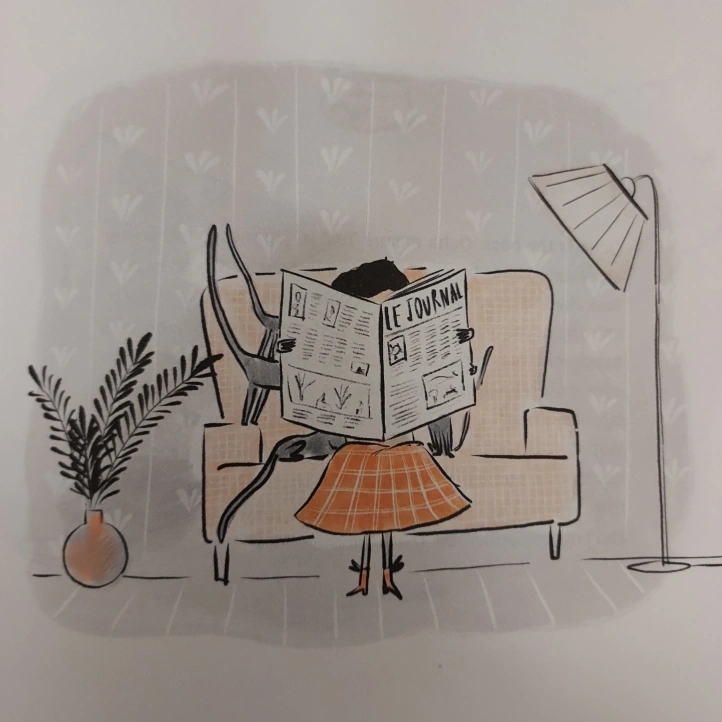
To do that, the cats learned to read. Ms. Barbery’s morning handwriting is messy, but she later types up what she’s handwritten. This is what they read. Mizu learned first, as Muriel read her texts aloud, and by peering at the text as it was read, Mizu found she could decipher print, then she taught the others.
While their writer is trapped in tormented slumber, wondering what her prose will look like in the morning, they read. Once they have shared their preferences, their attention moves to consistency, relevance, and the narrative progression of the text, its language, and its style.
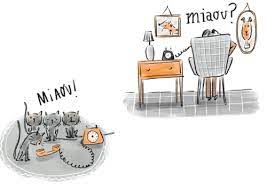
To best advise their owner, when she is rereading her text from the day before, Mizu sprawls across weak passages, Petrus sweeps his tail over them nonchalantly, Ocha meows insistently, and Kirin chews on the guilty page.
With their guidance, Muriel’s attention becomes focused, she rereads confidently, and the miracle occurs. She crushes the doubt that tormented her sleep.
The last affliction of their writer, denial, is more complicated. Sometimes, Muriel convinces herself that her text can hold water when it’s really full of leaks. In these cases, Mizu farts onto the offending lines, leaving distinct traces. After screaming and holding the sheet of paper at arm’s length, Muriel rereads the prose, shakes her head, and murmurs, “This is really bad.” And seeks to fix it.
Though her cats can read and critique, they cannot type. In the end, we find out that Ms. Barbery wrote the book. But Mizu, Ocha, Petrus, and Kirin are a little put out, as they feel that some details of their lives and preferences were portrayed inaccurately.
The cats want a little recognition for their literary labors of love. It’s not too much to ask. Without them, their writer would be lost, and the literary world would be turned on its head.
Where would writers, illustrators, readers, and creatives be without our furry feline or canine friends?
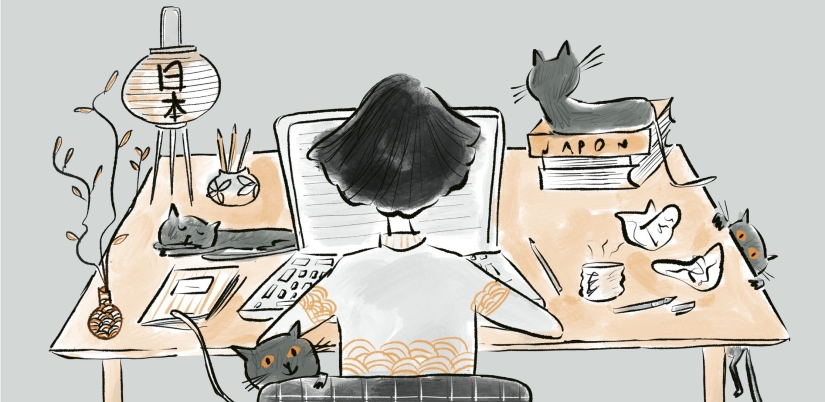
The photo below shows my literary companions; my chair is just out of side, beside Portia’s body. I look forward to writing for many reasons; time spent in their company is among them.
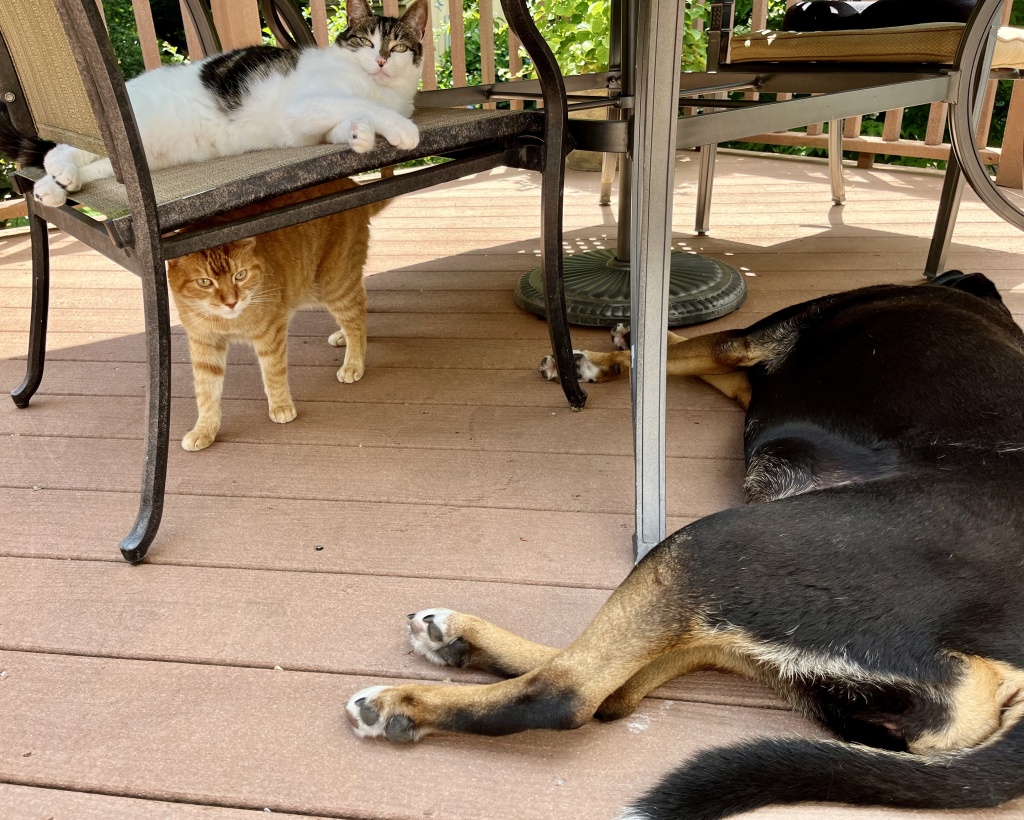
Portia, the black dog, is my constant companion. Sophie, the black and white cat, prefers when my lap has ample space for her to stretch out. Still, she’ll content herself with close proximity, and Pippin, the orange tabby, is conflicted. I’m sure he would be an alley cat, except for the availability of regular meals and the fact that we cater to his finickiness.
Now, if they could only meet Mizu, Ocha, Petrus, and Kirin, and be taught to read, not only would I have comforting writing companions, but literary advisors as well.
If you’d like to share this post click the buttons below:
Previous Posts you might like:





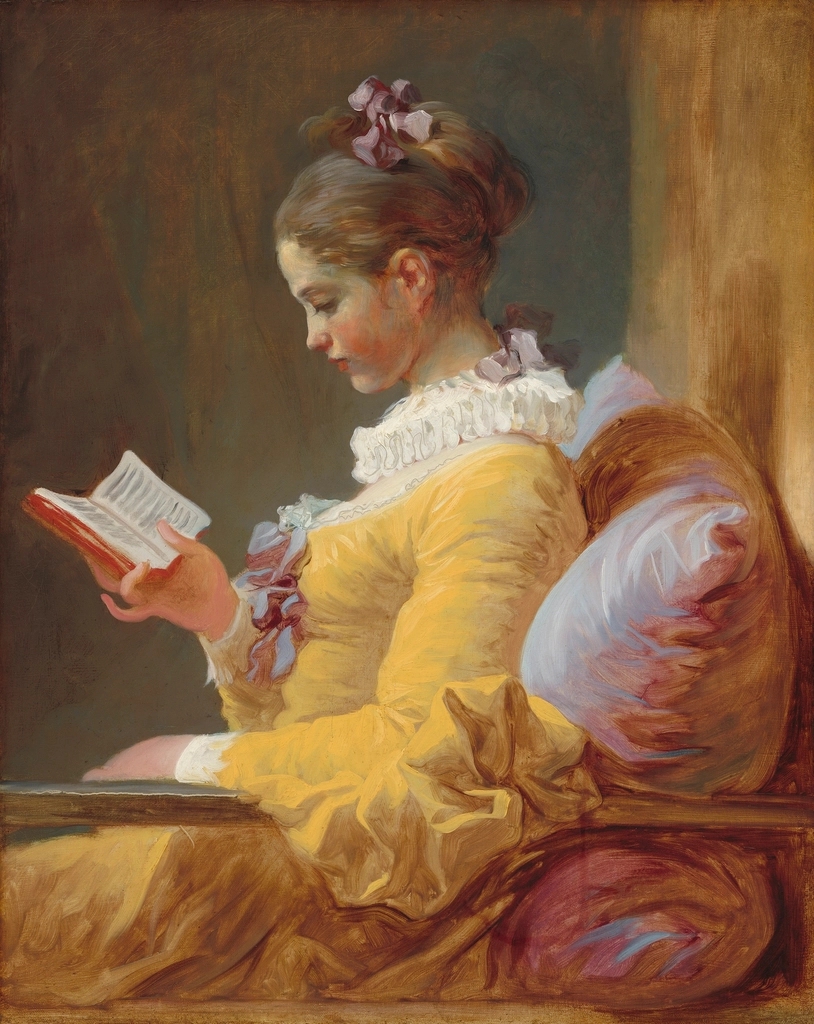

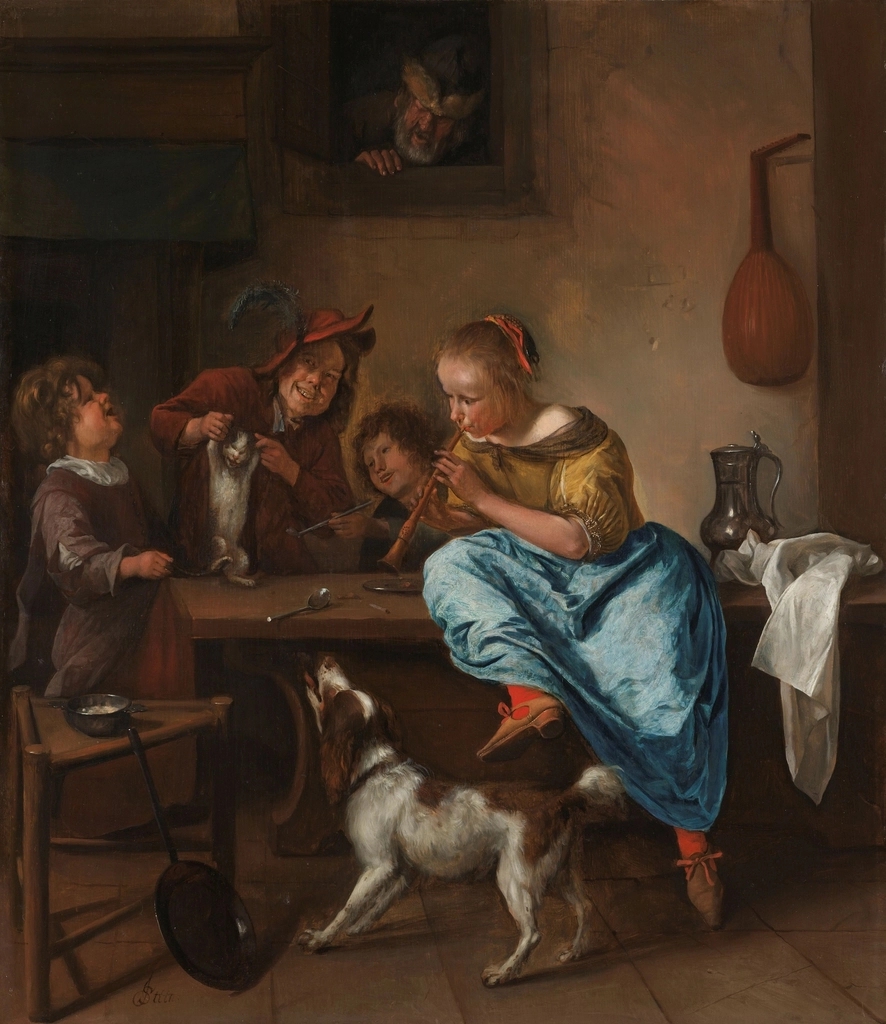


Leave a comment